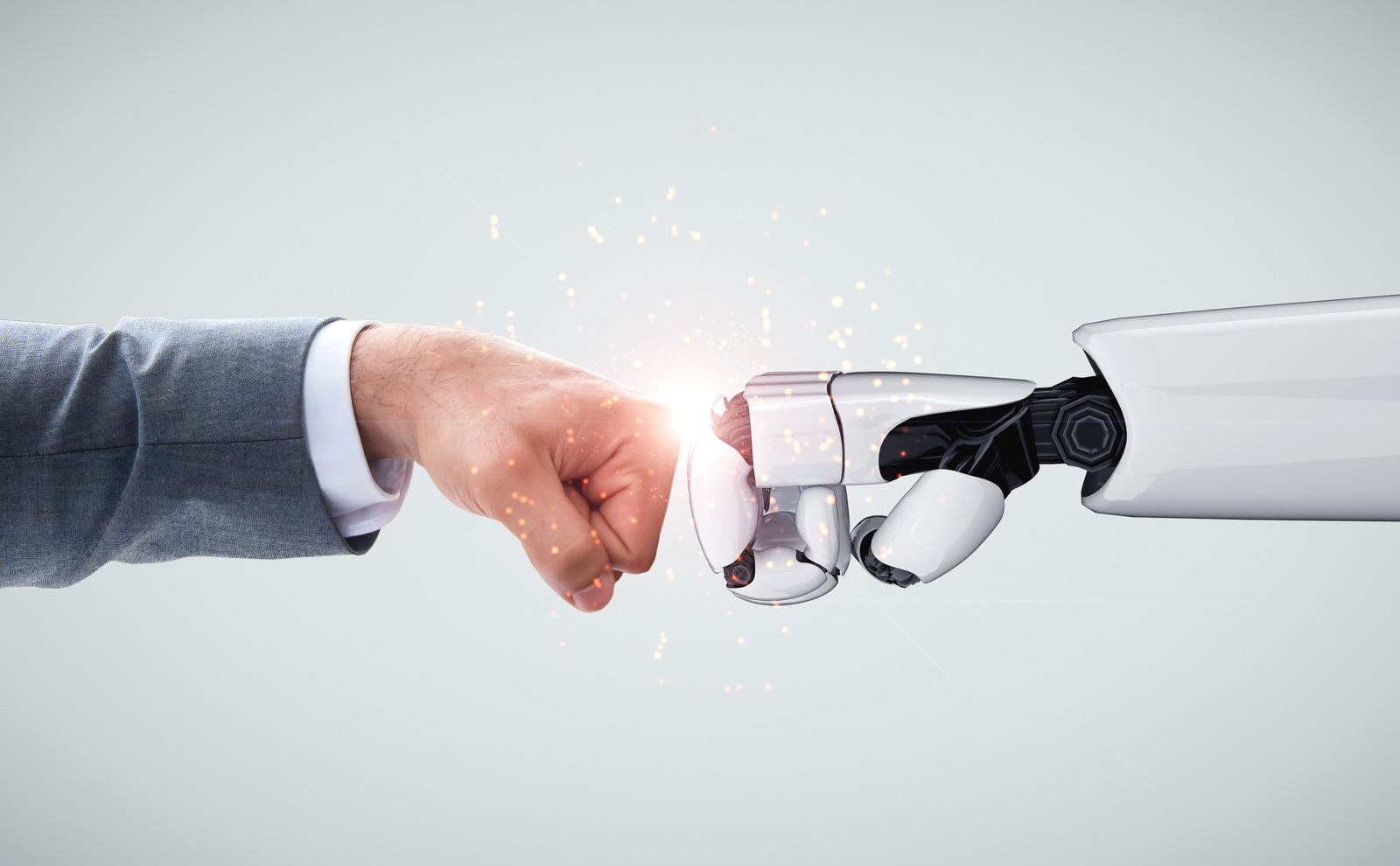Effective change leadership is critical in today’s ever-evolving business landscape. To thrive, you must navigate unprecedented uncertainty. But how do you successfully steer your way through ambiguity without disrupting your workforce and business? What strategies help keep you ahead of the curve during your organizational transition?
While the solutions on how to lead through change are simple to outline, they take certain skills to implement. Change leaders must use a strategic blend of vision, communication, collaboration, and active engagement. So, the first step is to convey the necessity for change and inspire key stakeholders with a compelling vision for the future.
This article looks at the effects of change leadership in organizational transition. It offers practical insights on bolstering employee engagement during times of uncertainty. We also discuss how leadership through change involves employee and stakeholder engagement strategies and how to create a change-friendly organizational culture.
Understanding the Shifting Dynamics of Change
The first thing to recognize is that traditional change management strategies have become outdated and ineffective. According to a McKinsey report, 70% of change initiatives fail to reach the desired outcome. The main reasons behind this are employee resistance and lack of leadership support. Moreover, Gallup’s research also saw low employee satisfaction with poor leadership communication and enthusiasm for the future. Only 13% of those surveyed thought their organization’s leadership communicated effectively. [1] [2]
Given the high failure rate of current change management strategies, it is time for a new approach. The way to achieve this is to place a higher priority on employee engagement and open communication. Strong leadership is vital for articulating vision, communicating effectively, and sustaining momentum.
Every change management process is unique to its organization, of course. However, most successful plans follow a similar five-step template, as outlined in this table.
5 Steps to a Successful Change Management Plan:
| Steps | Key Points |
| #1. Recognize the Change Processes | Change has three phases: preparation, implementation, and follow-through. During preparation, you inform affected employees about the need for change and outline the vision. Implementation focuses on enforcing changes in line with your company’s image. And follow-through embeds those changes into the company’s culture and best practices. |
| #2. Understand the Drivers of Change | To effectively manage change, leaders must first understand the why. Recognizing the internal and external pressures driving the shift helps identify the root concerns and reasons for change. |
| #3. Create Your Plan | Develop a comprehensive change management plan. It should define the scope, identify your key stakeholders, assemble a change team, and have a roadmap. Lastly, establish clear, efficient communication channels and effective methods to monitor progress. |
| #4. Communicate and Update | Communicate change clearly to employees, addressing any concerns they may have on the impact of individual roles. Engage all key stakeholders to earn their support and remember to provide regular updates. |
| #5. Prepare for Challenges/Obstacles | Roadblocks to change are inevitable, even with the best-laid plans. Empower your employees to anticipate and proactively address challenges to facilitate effective change. |
Types of Change Requiring Change Leadership
We can group the modern types of change into three categories: technological, organizational, and cultural. Each of these plays a crucial role in shaping today’s dynamic business landscape in the US.
| Technological Changes | Organizational Changes | Cultural Changes |
| Task automation
New software/tools Remote work |
Restructuring/reorganization
Mergers & acquisitions Leadership & management Flat or decentralized shift |
DEI initiatives
Values & mission New policies/procedures |
Let’s review these changes in more detail and examine how each type differs in scope and focus. This understanding puts change leaders in a much better position to navigate and guide organizations through the complexities of today’s evolving business environment.
Technological Changes in the Workplace

Two significant technological advancements stand out in today’s rapidly evolving workplace. One is artificial intelligence (AI), and the other is telecommuting. Telecommuting has become increasingly prevalent since the COVID-19 pandemic, while AI continues to transform workplaces. Let’s explore the influence of these innovations on the workforce and the opportunities and challenges they bring.
AI-Powered Software and Tools
The adoption of new AI-powered software and tools promises enhanced productivity. However, successful implementation necessitates that employees overcome steep learning curves and integration challenges. Also, the complexity of AI-driven tools often demands specialized training to harness their potential effectively. Nonetheless, businesses must embrace the rising AI trend to stay competitive.
This chart shows the top current benefits of AI adoption for US companies.

Data source: FinancesOnline
Recent data shows that 77% of businesses either employ or consider artificial intelligence. Of these, 35% currently use AI, while around 42% are considering its future implementation. [3]
Telecommuting
Fully remote or hybrid work offers flexibility and convenience but can lead to isolation and technology issues. Some remote employees may struggle to collaborate with colleagues and access much-needed resources. Additionally, they may face challenges with maintaining a healthy work-life balance. Even so, 98% of workers questioned in a Buffer study expressed a preference to work at least some of the time remotely. [4]
Understanding these changes is central. Investing in training and development is crucial for companies to ensure employees adapt to new technologies and working practices. Businesses must also create or maintain cultures of innovation and offer continuous learning. These things help attract top talent to your organization and retain your best workers.
Organizational Changes
Organizational change is about enhancing organizational efficiency and effectiveness. This typically means restructuring, which aims to streamline operations and fosters agility but may cause some disruption.
Mergers and Acquisitions (M&A)
M&A aims to create synergies by harnessing potential efficiencies that enhance competitiveness but can be complex and stressful. Complications might arise due to legal, financial, or cultural integration and other workforce challenges.
Leadership Changes
Leadership changes should bring fresh ideas and revitalization but can provoke resistance in some people or departments. That’s because changes at the top often represent a significant shift in the status quo. Without effective communication, employees are left wondering what the new leader will bring to the table. For example, they may be concerned about how the change will impact their jobs, the team, or the organization more generally.
In 2021, a study titled “The Heard and the Heard-Nots” found that 74% of employees feel more engaged and effective when leaders listen to them. [5]
Flat or Decentralized Shifts
Transitioning to flat or decentralized structures means shifting from a traditional hierarchical structure. On the positive side, it can foster flexibility and innovation. On the downside, it might create confusion, cultural inconsistency, and potential employee conflicts. Thus, redistributing decision-making authority can lead to disagreements or power struggles as individuals adjust to new roles and responsibilities.
Cultural Changes
Cultural change is never easy but is often necessary as time progresses. It requires modifying or transforming an organization’s values, mission, leadership style, and policies. The idea is always the same: to create a more positive and productive work environment that benefits the workers and business.
Diversity, Equity, and Inclusion (DEI) Matters

DEI initiatives aim to create inclusive and equitable workplaces. These programs promote DEI through recruitment strategies, employee resource groups (ERGs), training programs, and diversity metrics. DEI is a long-term commitment and investment for businesses enhancing innovation and engagement.
Values & Mission
Changes in your company’s values and mission mean modifying its core beliefs and objectives. When done well, it fosters a real sense of purpose, which helps attract and retain talented workers. However, careful communication and alignment with company goals are essential for mitigating potential disruption.
In a 2019 Glassdoor survey, 79% of participants said they would consider a company’s mission and purpose before filling out an application form. [6]
New Policies and Procedures
Effective change management leadership is critical for introducing new policies and procedures to the workforce. These protocols should offer efficient, accountable, and responsible work guidelines, for example, to address changes in the regulatory environment, improve operational efficiency, enhance employee wellbeing, and support new business initiatives, among others. Effective communication, training, and alignment with company values are the foundation of all new policy and procedural changes.
Essential Skills Required for Change Leadership
Some are natural leaders and need little support or guidance on how to do their job. However, most change leaders have learned their skills either from the ground up or through building on existing qualities. Everyone is unique. So, the people in charge of decision-making must identify their strengths while improving their weaknesses.
Change Leadership Skills for 2023 and Beyond

Even great leaders strive for improvement, as there is no graduation in leadership; it is a continuous journey of growth and development. Effective change leadership requires a unique set of skills. The most critical include coaching, collaboration, commitment, communication, confidence and optimism, and decision-making.
Other areas you may need to focus on are emotional intelligence, growth mindset, project management, resilience, and forward-thinking. Change leaders with these aptitudes are well-positioned to lead their organizations through successful change initiatives. Here is a summary of the types of skills and the areas of expertise they require.
Change Leadership Skills Defined
Coaching: Guiding others to improve skills and adapt to personal and organizational change. Recognizing and fostering the growth and development of top performers.
Commitment: Dedicated support for the change initiative and team members. Showing unwavering determination to see processes through to successful outcomes.
Confidence and optimism: Belief in one’s ability to lead the change and a steadfast optimism about the favorable outcomes it can bring about.
Decision-making: Making well-informed, thoughtful decisions is essential for effectively implementing and managing change in people and organizations.
Emotional intelligence: Understanding and effectively managing emotions to build strong relationships. Providing empathetic support to team members navigating change.
Resilience: Bouncing back from setbacks. Persisting in the face of obstacles and displaying resolute determination during the change journey.
Forward-thinking: Envisioning the future and strategically planning for organizational growth and transformation; ability to anticipate and adapt to change proactively.
—————————————————————————————————————————–
EWF Workshops Strengthen Leadership Pipelines
EWF International leadership development workshops empower organizations to embrace change effectively. Our first-class programs help companies like yours build and sustain a robust leadership pipeline while fostering growth and resilience in a dynamic business landscape.
How EWF Helps Build and Maintain Leadership Pipelines
—————————————————————————————————————————–
Interpersonal (Social) Skills
Collaboration: Working seamlessly with others by aligning efforts, fostering trust and open communication while valuing diverse perspectives.
Communication: Ability to create a compelling narrative around change, ensuring everyone understands why it’s happening, the benefits, and how things will unfold. Effective communicators listen, address concerns, and tailor messages to engage and motivate.
Personal Growth Skills
Growth mindset: Belief that one can acquire abilities through concerted effort, continuous learning, and open-mindedness. Developing a growth mindset enables leaders to adapt and thrive in evolving circumstances.
Project Management Skills
Project Management: Capacity to meticulously plan, execute, and monitor projects to ensure successful change initiatives while meeting deadlines and budgets.
Strategies to Engage Employees and Stakeholders
The solution to effective leadership for navigating organizational change is acknowledging the human aspect of the transformation. While procedural steps are vital, engaging and guiding your team and stakeholders through the journey is equally important. That starts by establishing a clear vision and ensuring everyone understands their role. To be a change champion, you must remember to communicate openly and consistently without exception. Also, actively remove any obstacles and address all issues raised promptly.
Lastly, cultivate a safe environment to address concerns and feedback. Leading through change requires constant engagement, guiding with empathy, and an open-door policy. This approach helps facilitate change successfully, even in the face of resistance.
How to Build a Culture that Welcomes Change
Never underestimate leadership’s contribution to positive work cultures. Companies should foster cultures that embrace change to thrive and survive in today’s rapidly changing environment. The way to approach this is by focusing on the following key areas:
- Hire based on qualities like learning, curiosity, resilience, and adaptability
- Encourage employees to expand their talents; fostering versatility
- Invest in mid-level management
That last point is worth extra thought. Mid-level management is crucial in navigating modern workplace challenges such as hybrid and virtual teams, trust-building, and managing burnout. Middle managers handle these challenges better, as they bridge the gap between top leadership and frontline employees. This directly and positively influences team performance and dynamics.
Leadership development that focuses on the skills needed today—not only past successes—is paramount. In many cases, it pays to shift the emphasis from culture fit and technical expertise to learning ability, curiosity, integrity, and people skills. Don’t forget to embrace diversity to diversify leadership profiles and promote innovation and adaptability.
—————————————————————————————————————————–
EWF Transformational Leadership Development Programs
EWF International’s transformational leadership development programs empower your corporate leaders to drive meaningful change during times of transition. Our programs help cultivate visionary leadership skills while fostering innovation and growth as your organization navigates today’s dynamic business landscape.
More Here on EWF’s Effective Leadership Development Programs
—————————————————————————————————————————–
To Conclude
Change and uncertainty are intrinsically linked. Effective change leadership in today’s business landscape requires a strategic blend of vision, communication, collaboration, and engagement. Modern leaders must prioritize employee engagement and open communication to successfully manage technological, organizational, and cultural changes.
Essential skills for change leadership include coaching, commitment, decision-making, and emotional intelligence. Building a change-friendly culture involves investing in mid-level management and embracing diversity for innovation and adaptability.
—————————————————————————————————————————–
Resource Links
- https://www.mckinsey.com/70%-of-change program-fail/
- https://www.gallup.com/change-management-failure/
- https://www.crossrivertherapy.com/AI-statistics/
- https://buffer.com/state-of-remote-work/2023
- https://workforceinstitute.org/The-Heard-and-the-Heard-Nots-Study/
- https://www.glassdoor.com/mission-culture-survey/




